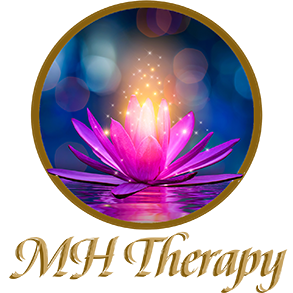Attachment theory, developed by psychologist John Bowlby in the mid-20th century, has become a cornerstone in understanding human relationships and psychological development. At its core, attachment theory explores the dynamics of emotional bonds between individuals, particularly between infants and their primary caregivers. In recent years, attachment theory has also been applied to therapy settings, offering valuable insights into how early attachment experiences shape one’s patterns of relating and navigating relationships throughout life. In this article, we will delve into the principles of attachment theory, its relevance in therapy, and how therapists utilize attachment-based approaches to foster healing and growth.
Understanding Attachment Theory:
Attachment theory posits that from infancy, humans have an innate drive to seek proximity and security from attachment figures, usually caregivers, in times of distress or uncertainty. Bowlby identified four primary attachment styles that develop based on the quality of early caregiving experiences:
Secure Attachment: Infants with secure attachment bonds feel confident that their caregiver will respond to their needs consistently and sensitively. They develop a sense of trust, safety, and security, which serves as a foundation for healthy relationships later in life.
Anxious-Preoccupied Attachment: Individuals with anxious-preoccupied attachment styles often worry about abandonment and seek reassurance and validation from others. They may exhibit clingy or dependent behavior in relationships, fearing rejection or abandonment.
Avoidant Attachment: Individuals with avoidant attachment styles learn to suppress their emotional needs and become self-reliant as a way to cope with inconsistent caregiving. They may have difficulty expressing vulnerability or intimacy in relationships, preferring autonomy over closeness.
Disorganized Attachment: Disorganized attachment arises in response to unpredictable or frightening caregiving experiences, such as abuse or neglect. Individuals with disorganized attachment may exhibit erratic or confused behaviors in relationships, struggling to establish coherent patterns of relating.
Attachment in Therapy:
Therapists utilize attachment theory to explore clients’ early attachment experiences and their impact on present-day relationships and functioning. By understanding clients’ attachment styles and patterns, therapists can tailor interventions to address underlying attachment-related issues and promote healing and growth. Some key components of attachment-based therapy include:
Building a Secure Therapeutic Alliance:
Therapists prioritize creating a safe and trusting therapeutic relationship that mirrors secure attachment bonds. They provide empathic attunement, validation, and support to help clients feel understood, accepted, and valued.
Exploring Attachment History:
Therapists collaborate with clients to explore their early attachment experiences, including interactions with primary caregivers and significant others. Through this process, clients gain insight into how their attachment history influences their current thoughts, feelings, and behaviors in relationships.
Repairing Attachment Wounds:
Attachment-based therapy focuses on repairing attachment wounds and fostering secure attachment patterns. Therapists help clients develop greater self-awareness, emotion regulation skills, and communication strategies to navigate relationships more effectively.
Enhancing Emotional Regulation:
Clients learn to identify and regulate their emotions in therapy, addressing underlying attachment-related anxieties and insecurities. Therapists teach mindfulness techniques, grounding exercises, and coping skills to help clients manage distress and cultivate emotional resilience.
Strengthening Boundaries and Autonomy:
Therapists support clients in setting healthy boundaries, asserting their needs, and cultivating autonomy in relationships. Clients learn to distinguish between healthy autonomy and avoidant detachment, fostering greater intimacy and connection with others.
Applications of Attachment Theory:
Attachment theory informs a wide range of therapeutic approaches, including psychodynamic therapy, cognitive-behavioral therapy (CBT), interpersonal therapy, and emotionally focused therapy (EFT). Therapists integrate attachment principles into their work to address relational issues, trauma, mood disorders, and interpersonal conflicts. By recognizing the role of attachment in shaping human behavior and relationships, therapists can offer more effective and compassionate care that honors clients’ attachment needs and fosters healing and resilience.
Conclusion:
Attachment theory provides a valuable framework for understanding the complex interplay between early attachment experiences, interpersonal relationships, and psychological well-being. In therapy, attachment-based approaches offer clients a path to explore and heal attachment-related wounds, develop healthier relationship patterns, and cultivate greater emotional security and resilience. By integrating attachment theory into clinical practice, therapists can help clients navigate the complexities of human attachment and foster deeper connections, both within themselves and with others.



